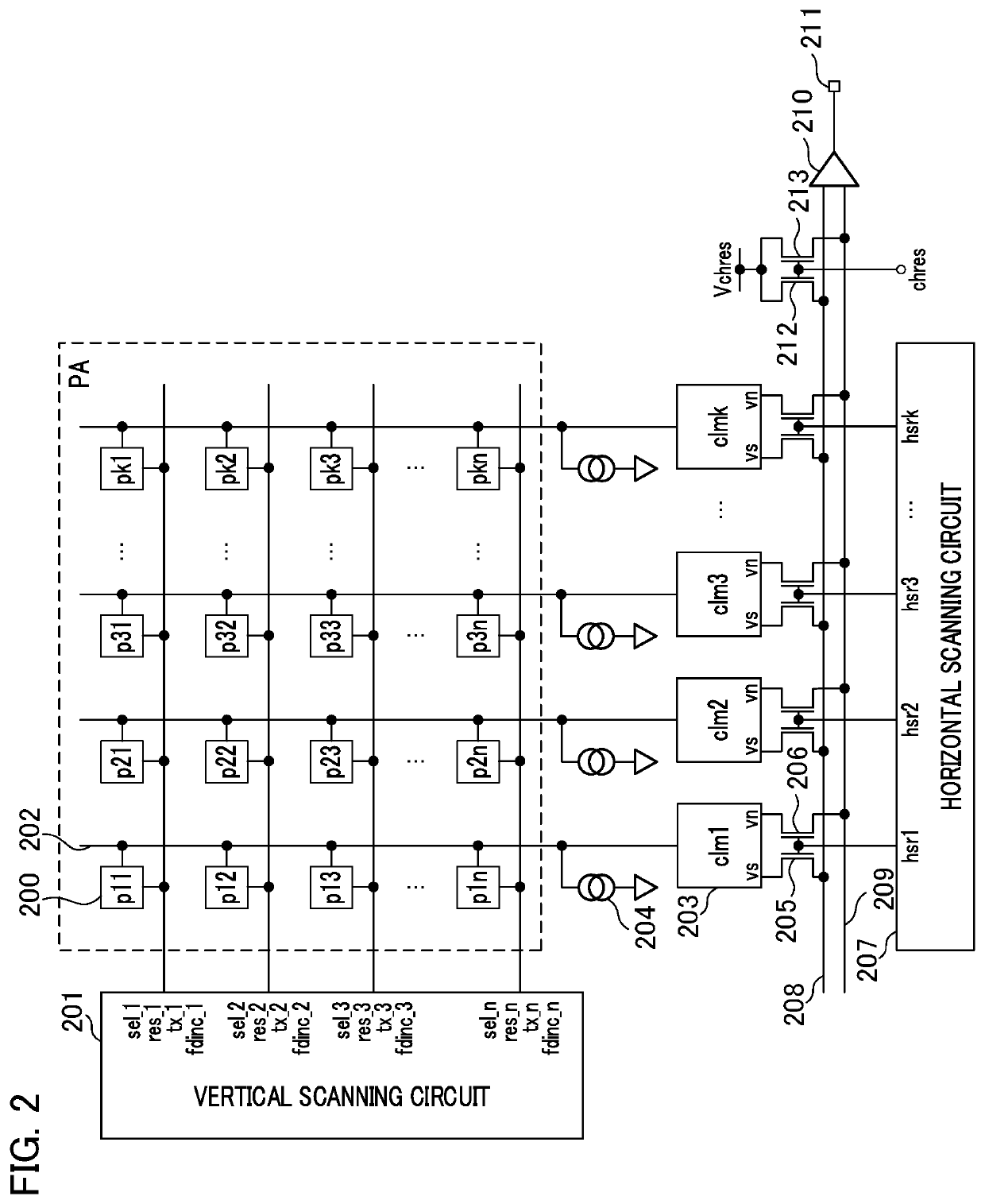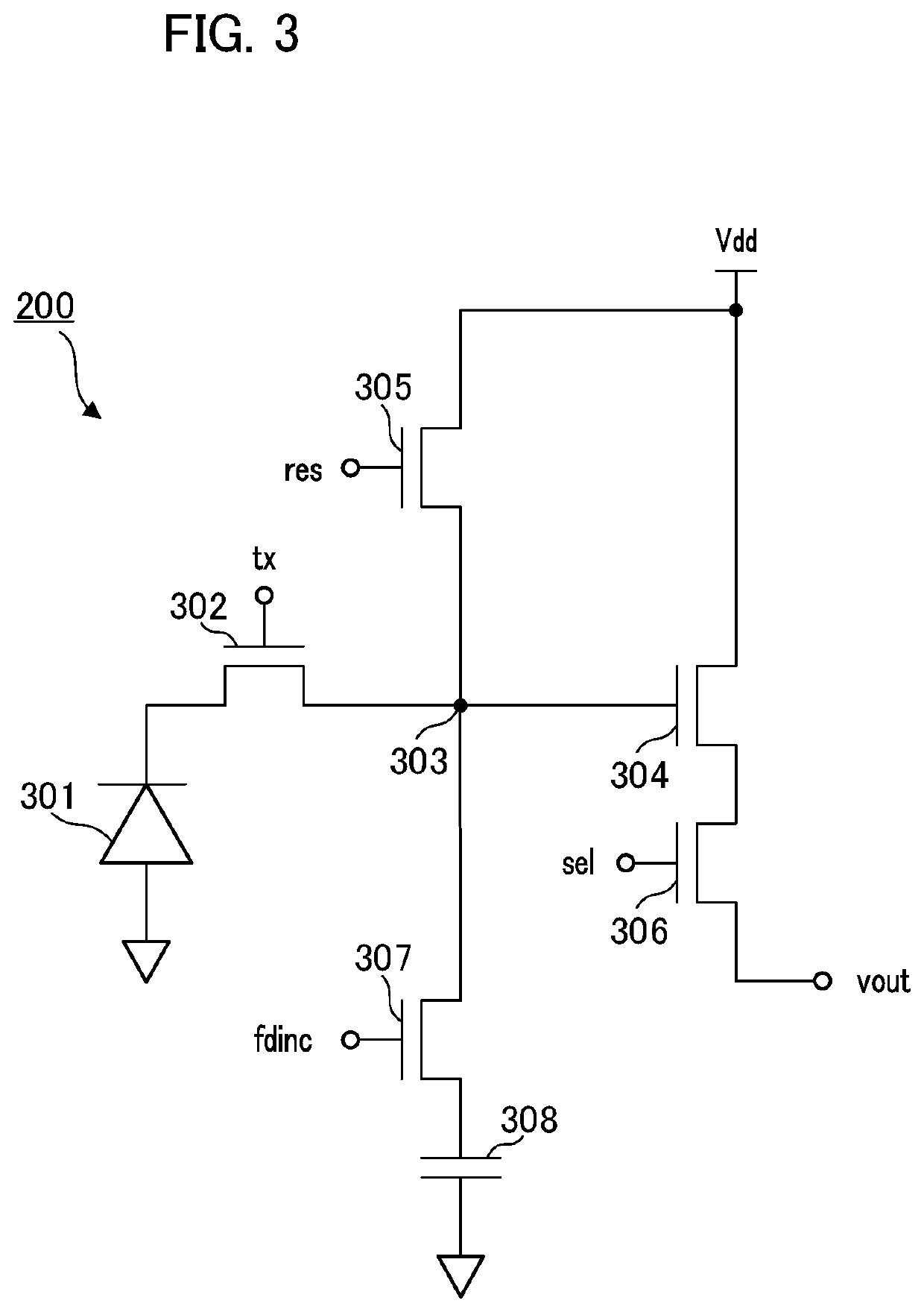Imaging device and control method therefor
a technology of a camera and an image sensor, which is applied in the field of imaging devices, can solve the problems of underexposure or pixel saturation, and the inability to perform accurate photometry in one-time exposur
- Summary
- Abstract
- Description
- Claims
- Application Information
AI Technical Summary
Benefits of technology
Problems solved by technology
Method used
Image
Examples
first embodiment
[0023]FIG. 1 is a diagram illustrating an overall configuration of an imaging device 100 according to an embodiment of the invention. Hereinafter, a subject side is defined as a front side. Positional relations between units will be described. A first lens group 101 is a lens group disposed on the front side of an imaging optical system and is held to advance and retreat in an optical axis direction in a lens barrel. A diaphragm 102 is an optical member that performs light quantity adjustment at the time of photographing by adjusting an opening diameter and is located between the first lens group 101 and a second lens group 103. The second lens group 103 is integrated with the diaphragm 102 to advance and retreat in the optical axis direction. The second lens group 103 is a lens group that has a magnification changing action (zoom function) in cooperation with an advancing or retreating operation of the first lens group 101. A third lens group 104 is a lens group that performs focus...
second embodiment
[0087]Next, a second embodiment of the invention will be described. In the first embodiment, the case in which the FD gain is raised at the time of acquisition of the modulated light image data has been described. In the embodiment, however, a case in which the FD gain is reduced at the time of acquisition of the modulated light image data will be described with reference to FIG. 14. Differences from the first embodiment will be described and similar factors to those of the first embodiment will be omitted. For omission of the description, the same applies to embodiments to be described below.
[0088]FIG. 14 is a timing chart illustrating a reading operation of the image sensor 107 at the time of acquisition of modulated light image data 1 and modulated light image data 2. Only the signal fdinc_i which is a difference between FIGS. 11C and 13C will be described.
[0089]In the embodiment, in a case of either low ISO sensitivity setting or high ISO sensitivity, the level of the signal fdi...
third embodiment
[0091]Next, a third embodiment of the invention will be described. In the first and second embodiments, the case in which the FD gain is fixed at the time of acquisition of the modulated light image data has been described. In the embodiment, a case in which the FD gain is set to be variable at the time of acquisition of the modulated light image data will be described with reference to FIG. 15. A horizontal synchronization signal (referred to as an HD) is added to the timing chart of FIG. 15. In reading of an i-th row indicated by the horizontal synchronization signal HD, signal reading at a gain equivalent to ISO100 is performed. In subsequent reading of an i+1-th row, signal reading at a gain equivalent to ISO1600 is performed.
[0092]When the pixel signals of the i-th row are read at the gain equivalent to ISO100, the CPU 109 first asserts the horizontal synchronization signal HD corresponding to a reading period equivalent to one row. Subsequently, the CPU 109 sets the level of t...
PUM
 Login to View More
Login to View More Abstract
Description
Claims
Application Information
 Login to View More
Login to View More - R&D
- Intellectual Property
- Life Sciences
- Materials
- Tech Scout
- Unparalleled Data Quality
- Higher Quality Content
- 60% Fewer Hallucinations
Browse by: Latest US Patents, China's latest patents, Technical Efficacy Thesaurus, Application Domain, Technology Topic, Popular Technical Reports.
© 2025 PatSnap. All rights reserved.Legal|Privacy policy|Modern Slavery Act Transparency Statement|Sitemap|About US| Contact US: help@patsnap.com



